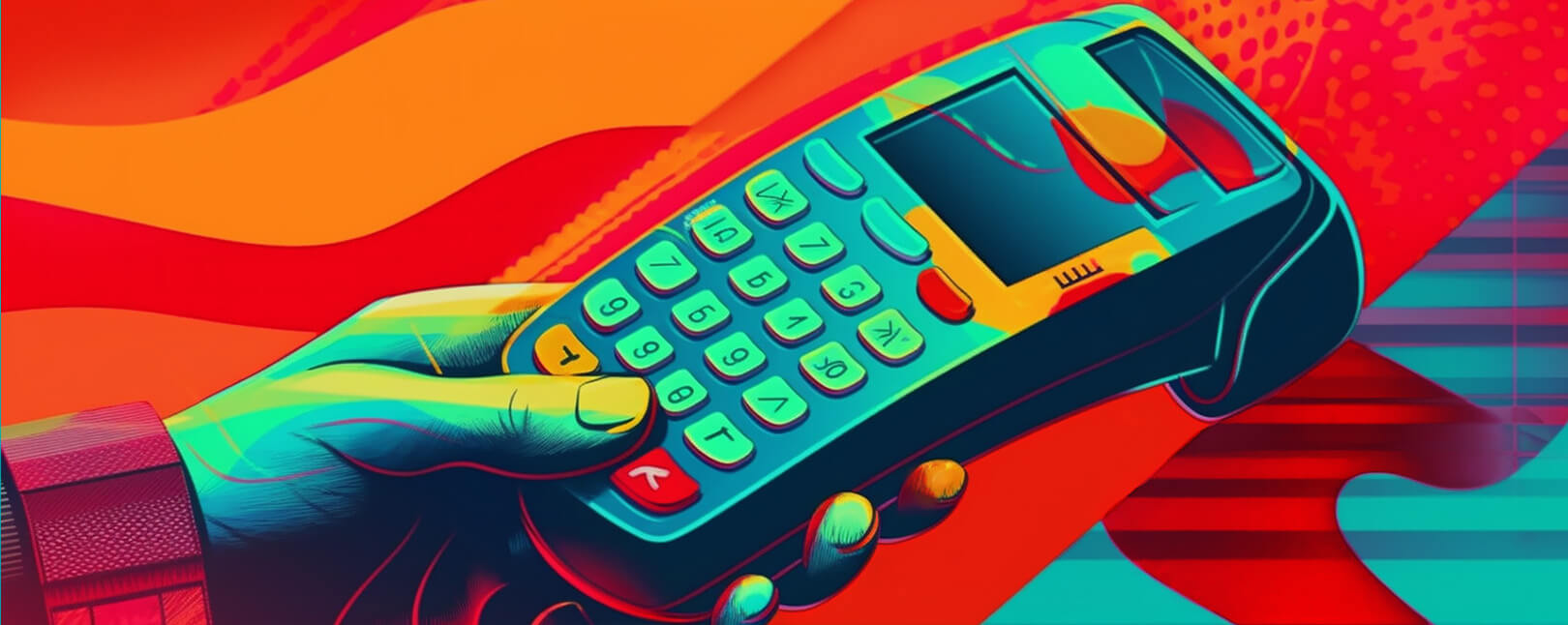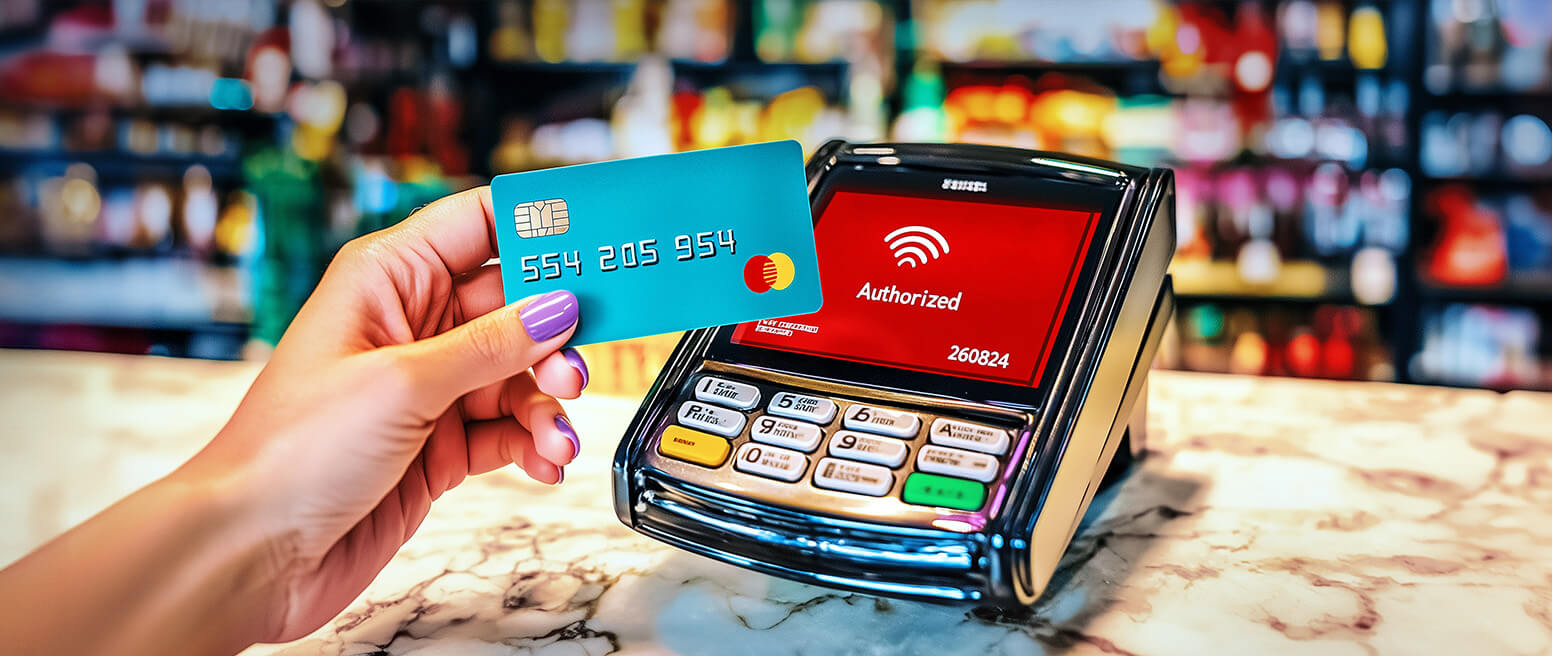How Does Credit Card Authorization Work? Are There Risks & Can Authorization be Reversed?
More than four out of five US adults will use a credit card this year. But despite how commonplace credit card usage is, most people don’t really know how the process works.
Authorization, for instance, is an integral step in every card transaction. Even so, the authorization process itself remains a mystery to many, despite being an essential component of day-to-day business.
Understanding the intricacies of card authorization is good for everyone involved in the card payment process. However, it’s key that merchants, in particular, know how this works. So, with that in mind, let’s dig in.
What is Credit Card Authorization?
- Credit Card Authorization
Credit card authorization is a notification given by a credit or debit card issuer (i.e. a bank, credit union, etc.), confirming that the cardholder has enough funds or available credit to cover a transaction they're making with their card.
[noun]/kreh • duht • kard • aa • thr • uh • zay • shn/Card authorization refers to the actual notification received by a merchant. It’s the “green light,” signaling to the merchant that the bank has validated the cardholder’s account in question, and that the bank approved this purchase.
This whole process occurs in the span of just a few seconds. However, it’s an essential step in the payment process.
The process of seeking approval is referred to as an “authorization request.” The authorization request is essentially the merchant’s way of asking the cardholder’s bank to validate the buyer’s account, ensure that the transaction is valid, and verify that the cardholder can meet their financial commitments. In short, the authorization process helps provide peace of mind to both businesses and customers about the security of their transactions.
How Does Card Authorization Work?
Before diving into the nitty-gritty of card authorization, let's quickly review the key players involved. Card authorization typically includes four parties:
(“The Issuer”)
(“The Acquirer”)
Generally speaking, an acquirer, also known as an acquiring bank, is a financial institution that handles credit or debit card payments on behalf of businesses. This specifically involves communicating with cardholders' banks — called an issuer or issuing bank — to authorize transactions. Here's how these parties interact with each other to approve or decline a transaction:
- The customer presents their card (or card information) for payment at the point of sale. Card authorization is required for both online and in-person transactions.
- The business's point-of-sale software automatically sends a request for transaction authorization to the merchant’s processor, which forwards the request to the acquirer.
- The acquirer forwards the request to the issuer via the card network, seeking approval for the purchase from the cardholder's bank.
- The issuing bank examines the cardholder's account to verify that the card is valid, and that sufficient funds or credit are available to cover the purchase.
- The issuing bank either approves or denies the transaction, based on the cardholder’s ability to cover the funds for the transaction.
This entire process usually takes just a few seconds, in the brief pause between submitting a card for payment and the card reader displaying "approved."
Why Do I Need Authorization for a Credit Card Transaction?
As mentioned above, the authorization phase confirms that the account exists, is in good standing, and has sufficient funds available. Requesting credit card authorization before completing a purchase leads to:
Incorporating the credit card authorization function into payment processing streamlines transactions and minimizes risk. It also creates a more positive experience for cardholders, leading to increased trust and loyalty.
Common Responses to an Authorization Request
If everything appears in order from the issuer's perspective, such as the card's validity and sufficient available funds, the issuer will grant approval for the transaction to proceed. This approval comes with an authorization code (“00” is the standard approval code).
Merchants may receive a variety of responses related to the card's eligibility for the transaction, though. Examples include:
Call for Info
If more information is needed, the bank will request that you reach out to them directly to process payment.Pick Up Card
If the card was reported lost or stolen, or the account is no longer in good standing, the message will ask to take the card from the buyerDuplicate Transaction
The same transaction was attempted more than once in a set number of minutes.That’s just a partial list. Check out our full article on card authorization codes to view the standard list of credit card denial codes:
Learn more about authorization codesYou will receive a response comprising a maximum of six digits. This is created through a combination of transaction data and credit card information. This code serves to protect sensitive card details while facilitating a secure transaction process.
What is an Authorization Hold?
An authorization hold is a procedure that temporarily secures transaction funds before they are captured from the cardholder's account. Some acquirers may capture these funds immediately following authorization. Often referred to as pre-authorization, merchants employ this technique to guarantee payment for specific transactions made via credit or debit cards before any funds are actually transferred.
Authorization holds play a crucial role in the payment process. By temporarily securing transaction funds, merchants can avoid disputes as the transaction is not yet “complete.” This interim period also allows merchants to verify the card through advanced security checks and can also help them avoid unnecessary refunds.
While an authorization hold can’t solve everything, it can make refunds a lot easier to deal with. If the customer needs to cancel a hotel stay or change a reservation, all the merchant has to do is release the hold to cancel the order before settlement.
Picture this: someone places an order and shares their card information for payment. The merchant’s acquirer/payment processor reaches out to the cardholder's issuing bank to request authorization for an estimated total amount, which might be a bit higher than the actual total.
If the card's issuer gives the green light, a hold is placed on the card for that amount. Once the transaction is completed and the app knows the final order amount, they request to capture that sum. It's kind of like giving a credit card for a hotel reservation to cover extra expenses; the hotel places a hold for a certain amount but only charges the customer the amount they actually spent when they check out.
Learn more about authorization holdsWhat About Pre-Authorization Settlement?
Using pre-authorization settlement gives merchants time to validate charges and look for potential fraud.
A pre-authorization settlement occurs when funds from a pre-authorization hold are deposited into the merchant’s bank account after the transaction has been settled. This is typically used when the final transaction amount is unknown at the time of purchase.
As mentioned above, a cardholder can’t dispute the transaction or issue a credit or debit card chargeback as long as the funds for a transaction are held but not settled. Merchants should note, however, that pre-auths can only be kept in place for a maximum of 30 days. Ideally, pre-auths should be replaced with settled transactions as quickly as possible.
Learn more about pre-auth settlementAuthorization vs. Settlement: What's the Difference?
Remember: authorization is the point at which the issuer checks if there are enough funds or credit to cover the purchase. The money doesn't move just yet, though.
The capture phase in the card payment process happens when the acquirer asks for the authorized funds to be transferred from the issuing account. The actual transfer takes place during capturing. Payment capture can follow a flexible timeline, but since most card authorizations expire within 5–10 days, businesses and their payment processors usually capture funds before that happens.
Finally, there’s settlement. This happens when the money from customer transactions finally moves from the cardholder's issuing bank to the business's acquiring bank.
Learn more about payment capture5 Reasons an Authorization Request Might Fail
Requests for authorization get declined all the time. But why, though? What happens when a credit card charge doesn’t go through? Can a card fail to authorize without something fishy going on?
Well, there are many reasons why a credit card authorization attempt might fail. Five of the most common decline triggers include:
Sometimes the business and customer are given a specific reason why a rejected charge was declined, and sometimes they won’t be. The amount of information that accompanies a rejected authorization depends on various factors, such as who the card issuer is, who the business’s payment processor is, what kind of POS system they have, and whether the transaction was online or in person.
Credit cards can fail for a range of reasons, no matter where they’re processed, but there are steps businesses can take to improve their authorization rate.
What is an Authorization Reversal?
An authorization reversal is a message initiated by a merchant, intended for a cardholder’s issuing bank. The message notifies the issuer that a transaction (in full or in part) has been canceled, and that an authorization hold should be removed.
If a merchant detects an error in the transaction process, they can contact their acquiring bank to initiate an authorization reversal before the transfer is complete. This effectively cancels the sale and prevents that transaction from going through.
Authorization reversals can lead to other problems down the road, so it’s not the best outcome. However, a merchant-initiated authorization reversal does offer certain benefits. It’s much easier to reverse an authorization than to deal with a refund later, or even a chargeback.
Learn more about payment captureBest Practices for Improved Authorization Rates
A merchant’s bottom line can be deeply impacted by the simplicity and security of their checkout process. If a business has a high rate of false declines and other issues, it can generally expect high cart abandonment rates and disputes to follow.
Not to worry, though; a few best practices will improve authorization rates and decrease risk. These include:
These best practices can go a long way toward protecting one’s business from false declines and fraud. They won’t solve every problem, though. Merchants need a multi-tiered risk-management strategy that can evolve at the same pace as the payments space.
FAQs
Is a credit card authorization a charge?
No. Card authorization is part of the transaction process, but the card is not officially “charged” until payment is captured.
How do I request credit card authorization?
Requesting authorization is done through a payment processor. This is offered as part of the range of services they provide to businesses. Many payment processors take on multiple roles in payment processing, including acting as the business's acquirer.
How long does a credit card authorization last?
A credit card authorization will expire after 30 days, at most. Merchants should seek to batch and submit transactions for capture within 24 hours if possible, though.
Can you cancel a credit card authorization?
Yes. A credit card authorization can be canceled anytime before the transaction is settled. This is called an authorization reversal.
What happens after credit card authorization?
After authorization, the merchant will batch transactions together, and submit them for processing. The funds will then be transmitted from the cardholder’s issuing bank to the merchant’s acquiring bank.















